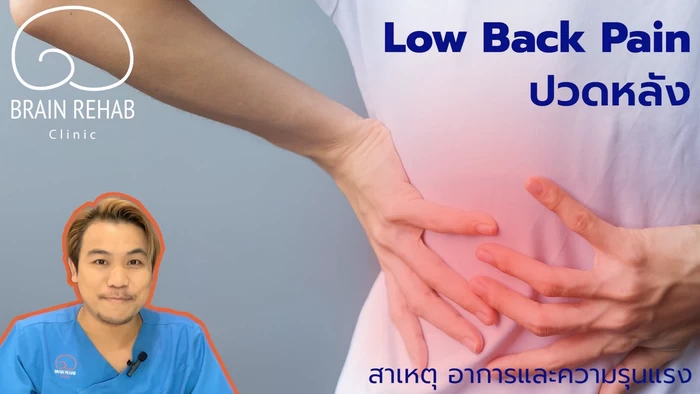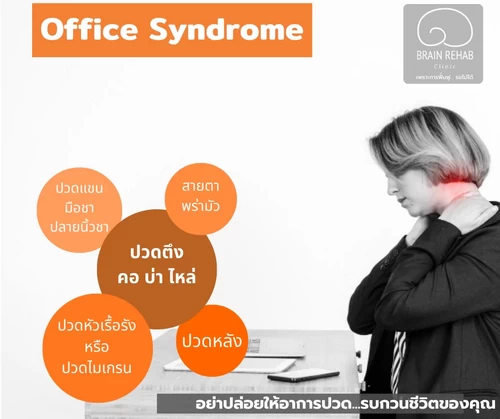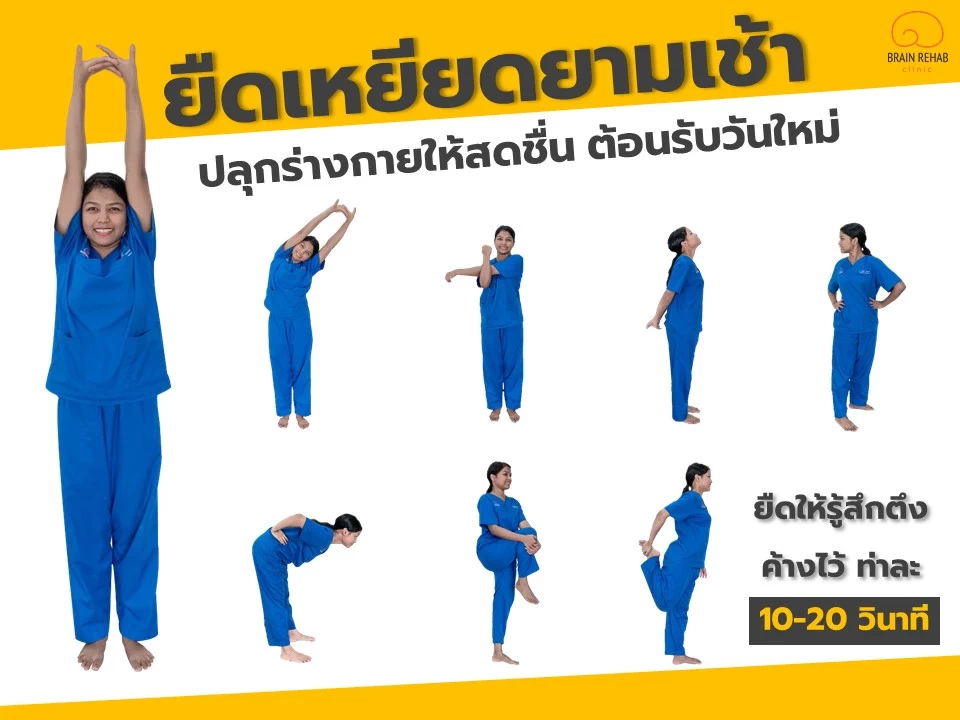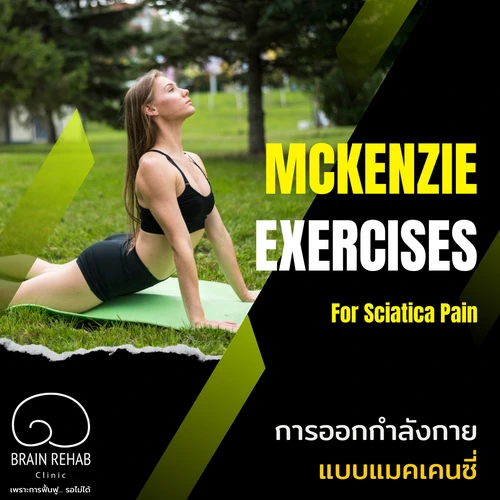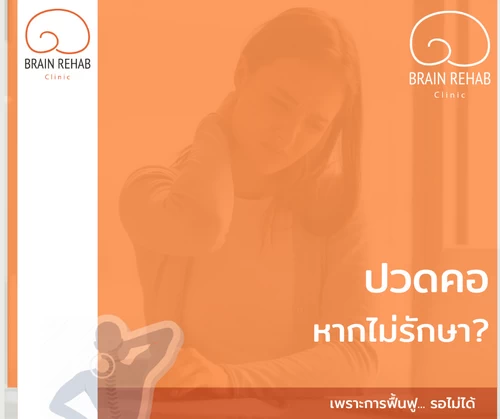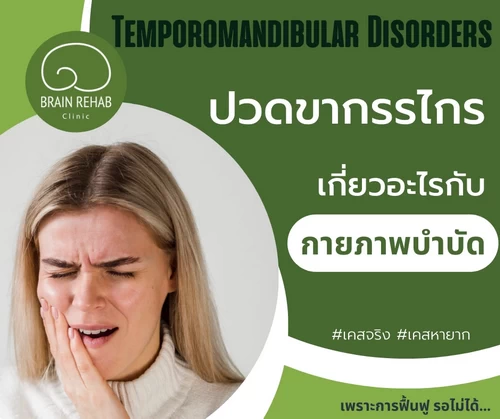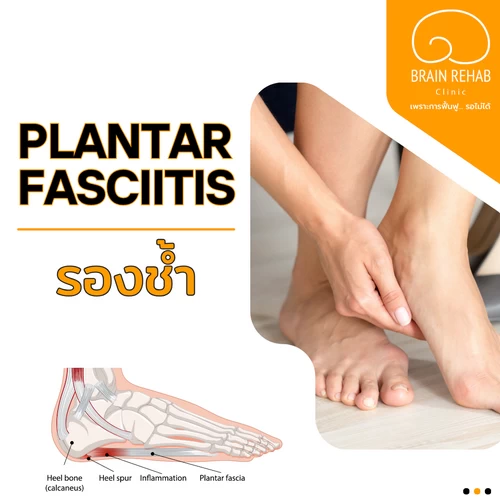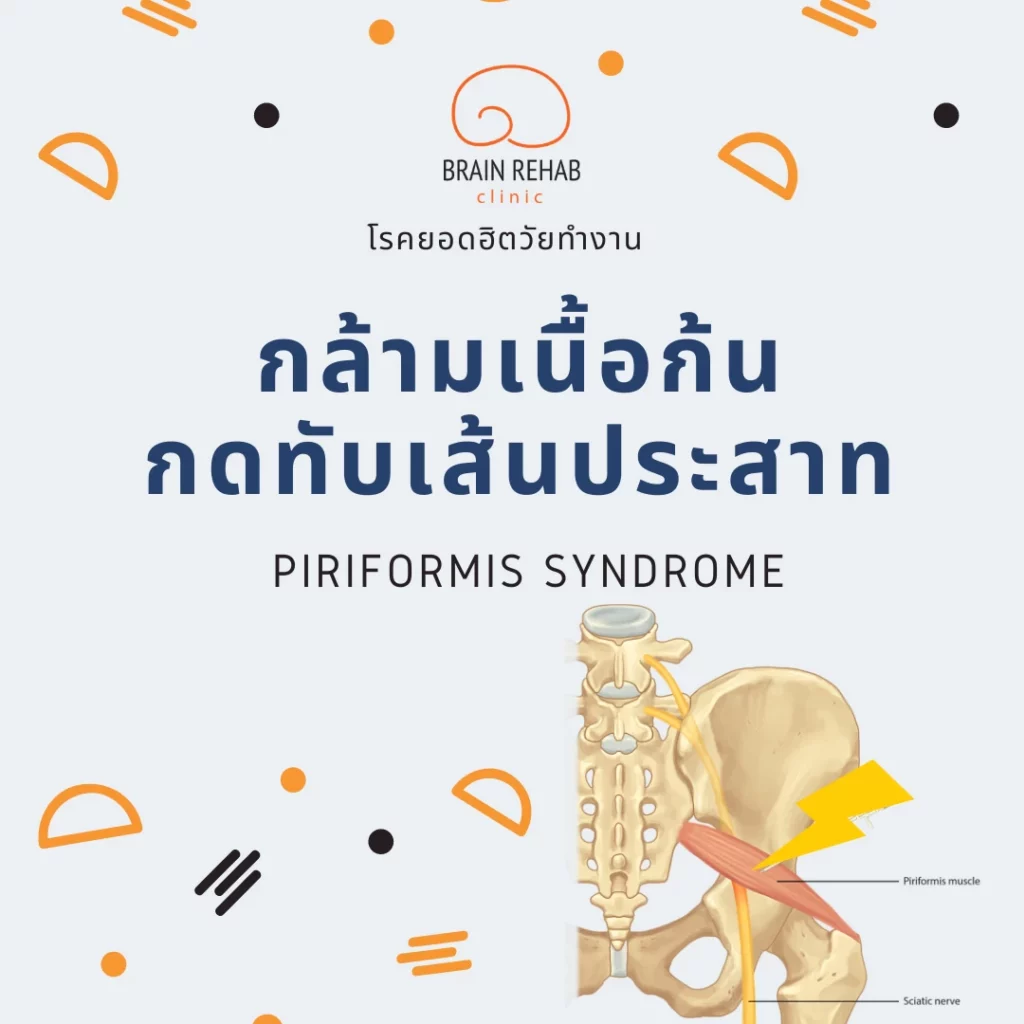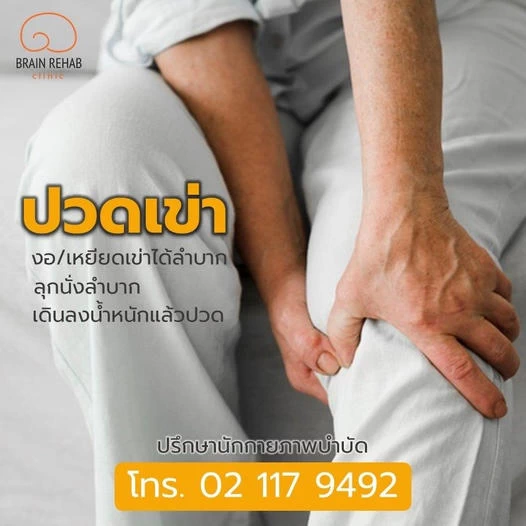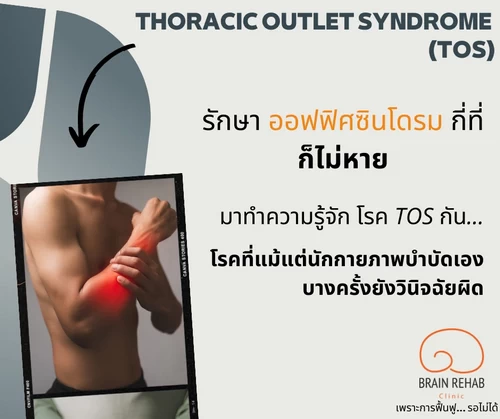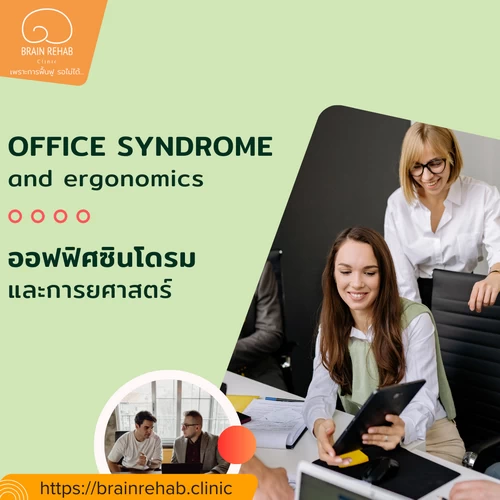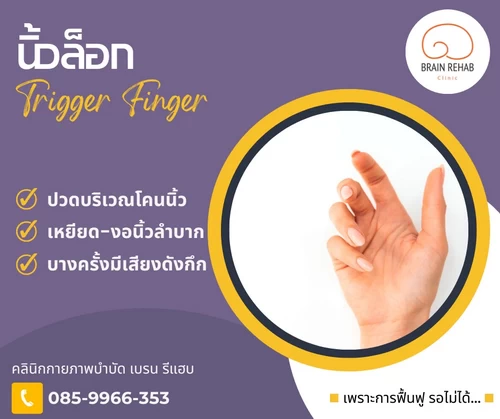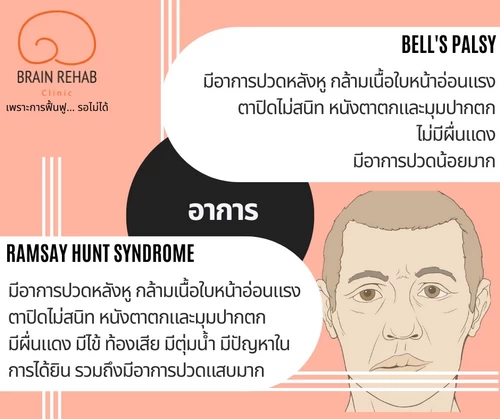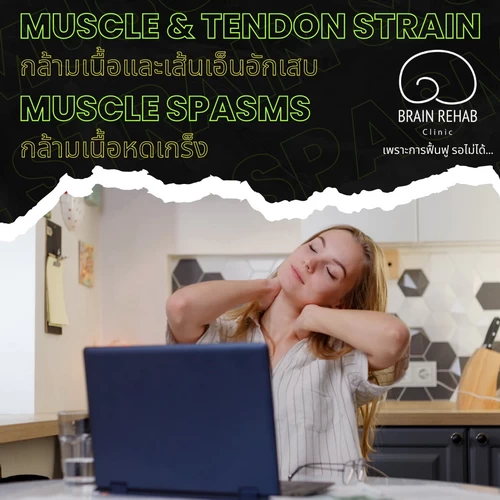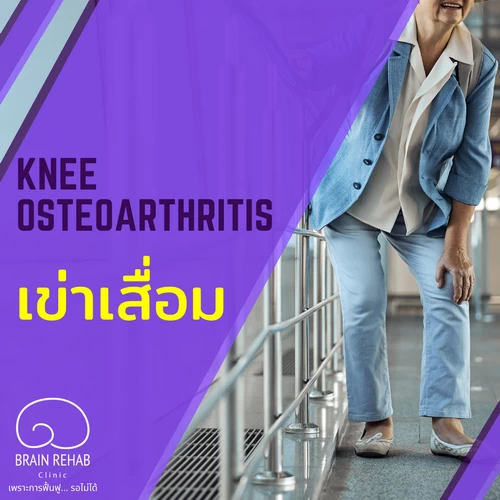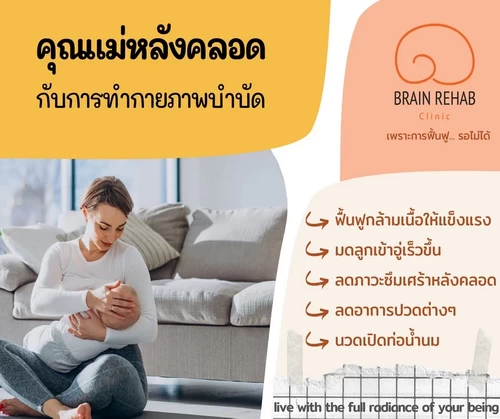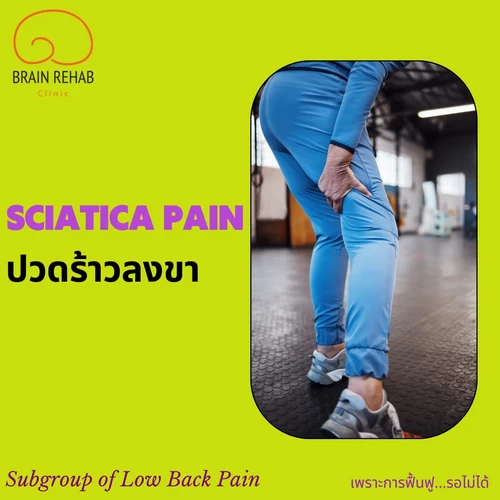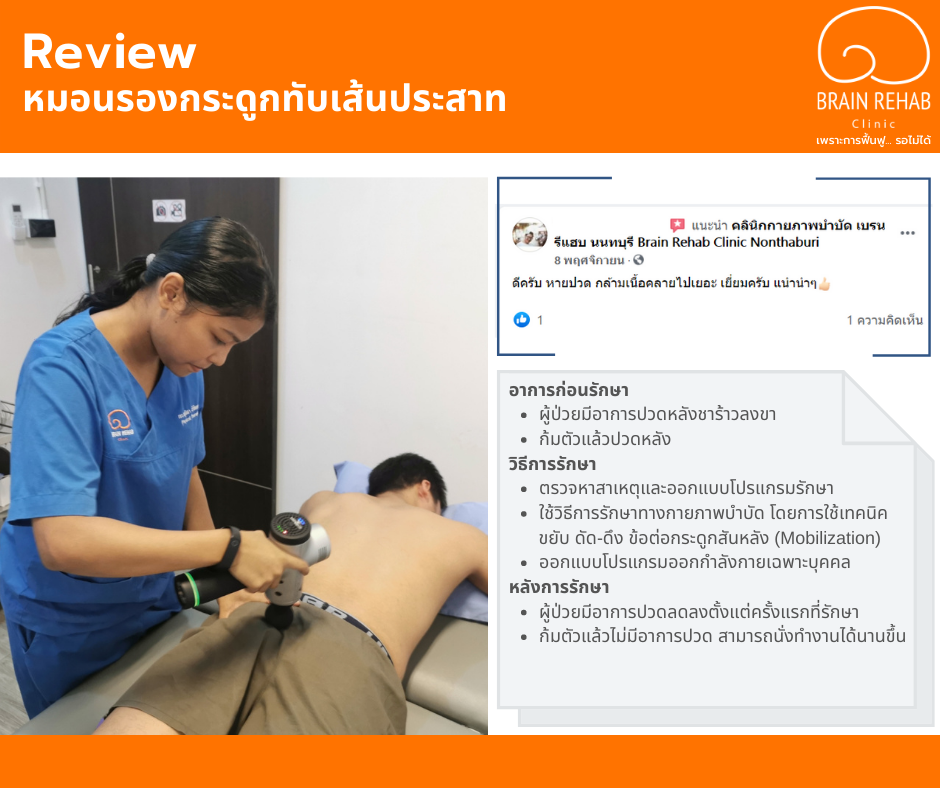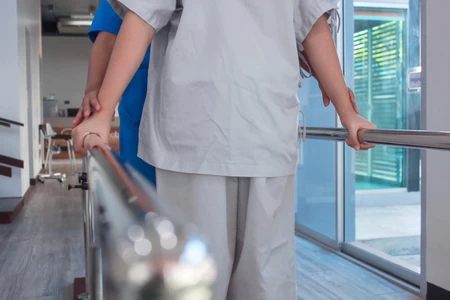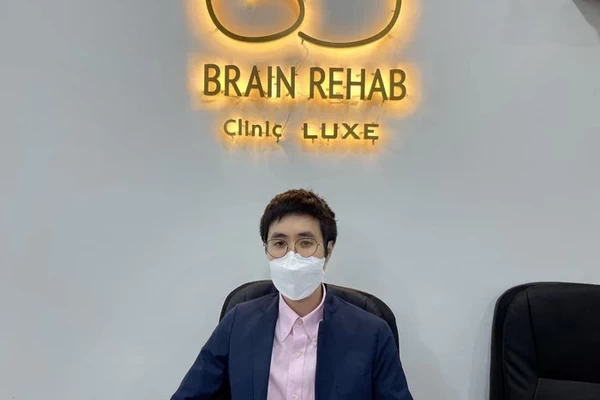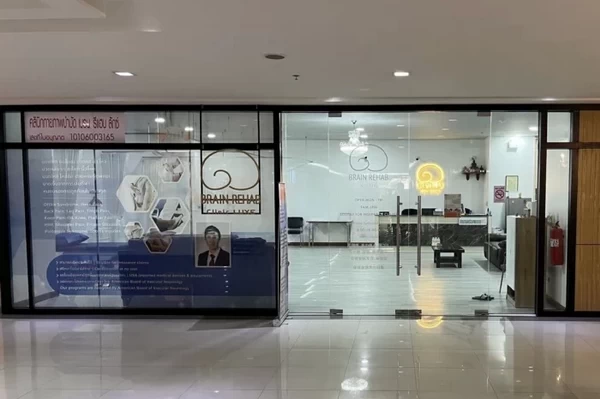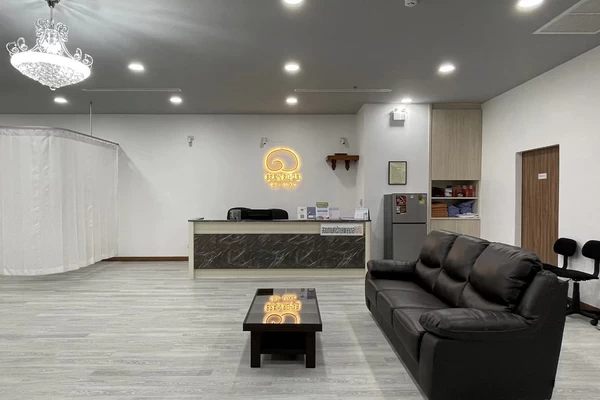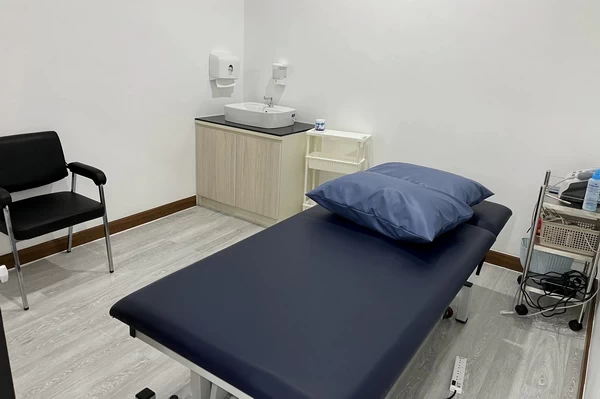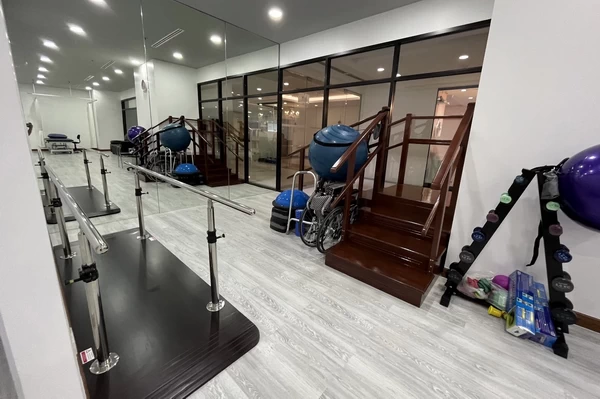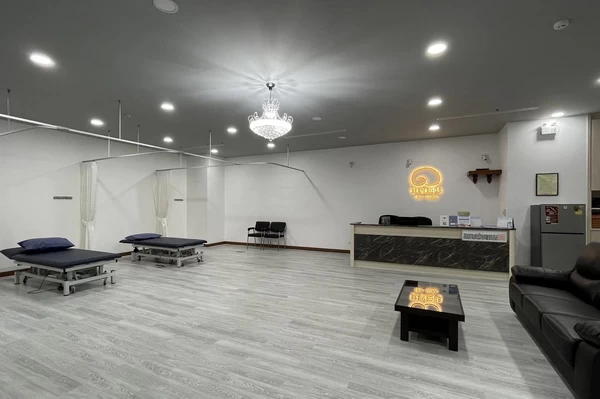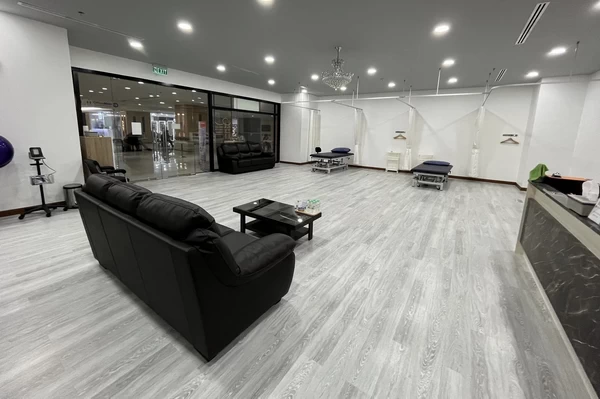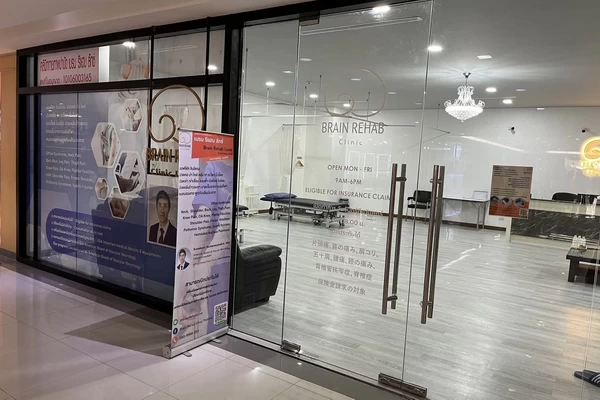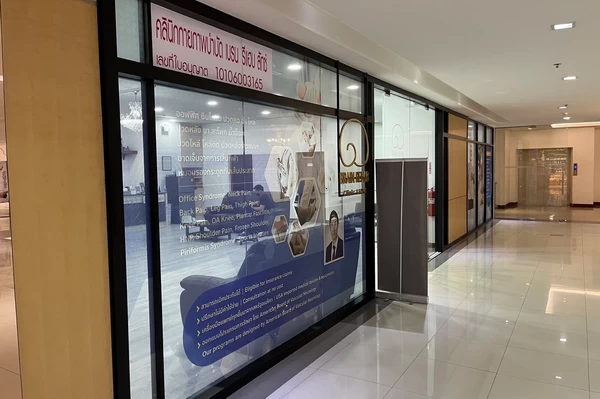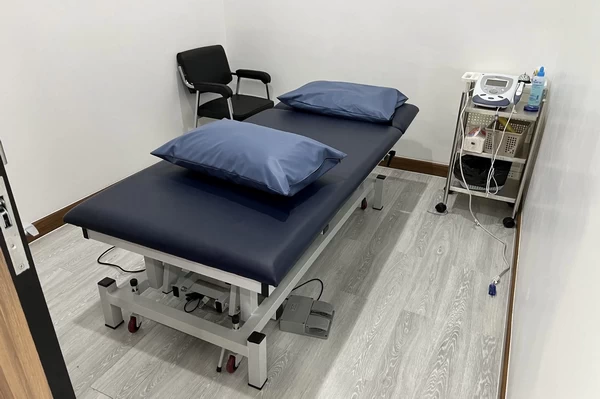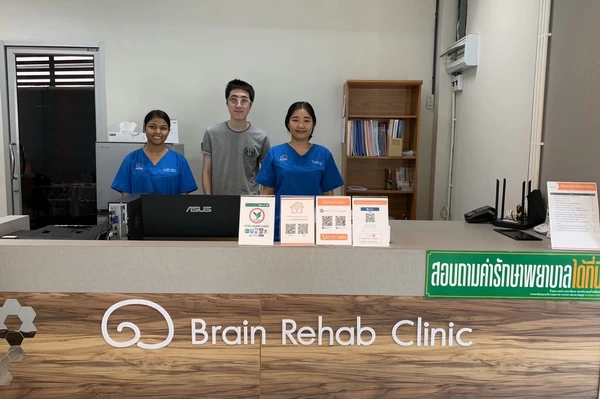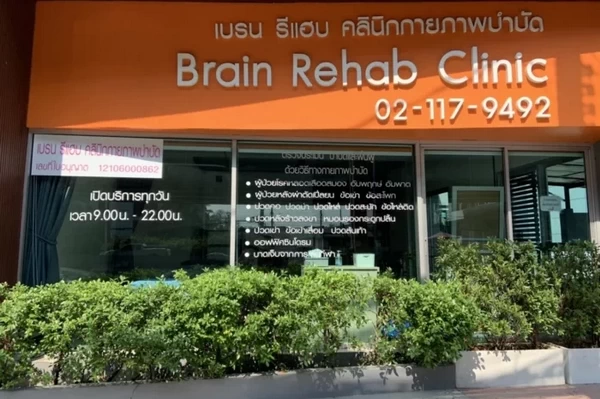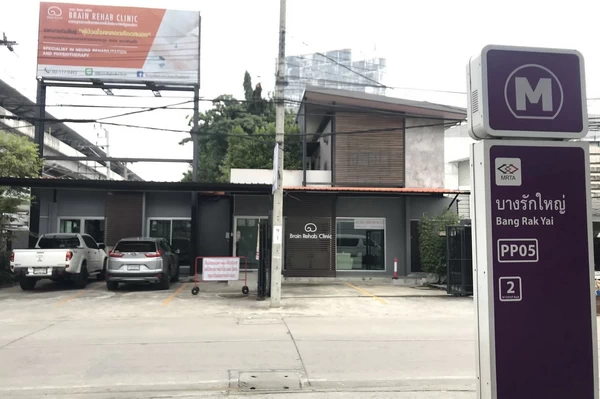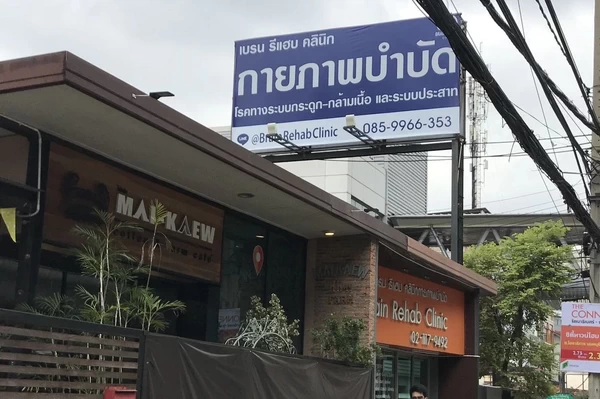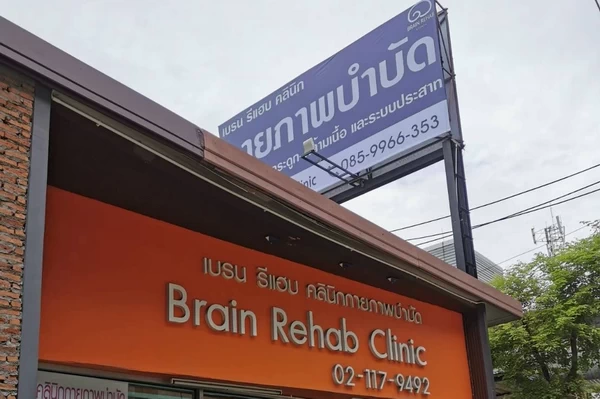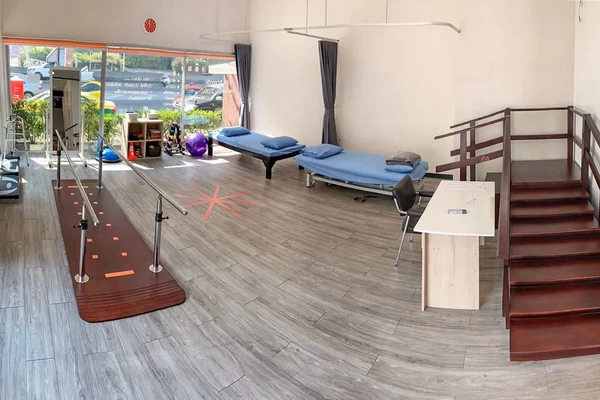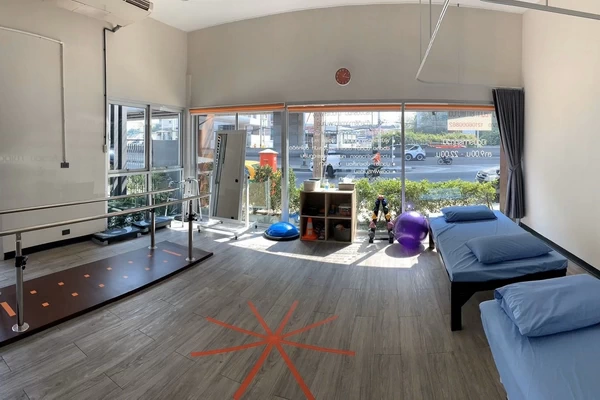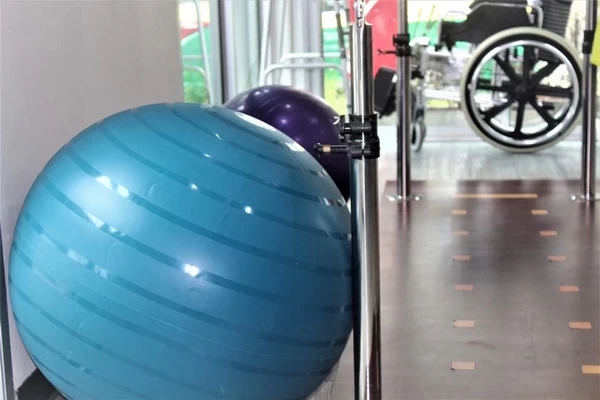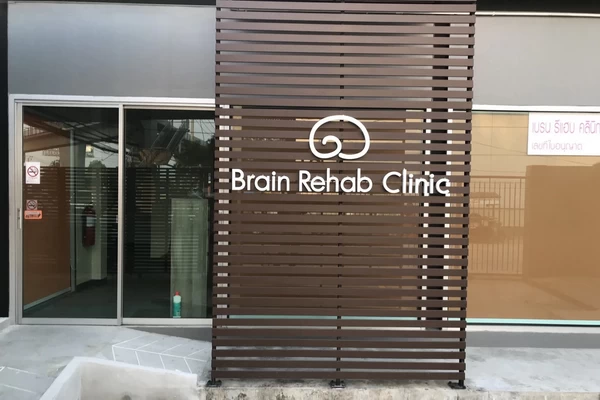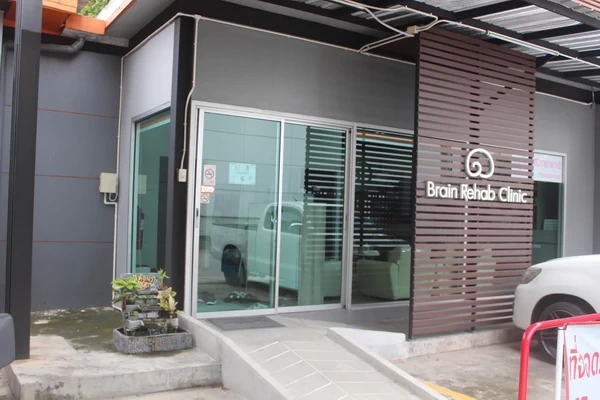Brain Rehab Physio Clinic

Alleviate Pain
Regain Movement
Enhance Quality of Life
Pain Management
Office-Related Syndrome
✓ Neck Pain (ปวดคอ บ่า ไหล่)
✓ Frozen Shoulder (ไหล่ติด)
✓ Low Back Pain (ปวดหลังส่วนล่าง)
✓ Knee Pain (ปวดเข่า)
Pain Management
In our daily lives—whether we’re working at a desk or simply relaxing—it’s often unavoidable to experience pain. This can range from minor discomfort that resolves on its own to chronic pain that significantly affects quality of life. Many people wonder how to properly manage pain when it arises. Is taking painkillers the only solution?
Let’s explore Pain Management, an essential aspect of health care that can help you improve your well-being and lead a happier, more comfortable life.
The International Association for the Study of Pain (IASP) defines pain as:
“An unpleasant sensory and emotional experience associated with, or resembling that associated with, actual or potential tissue damage.”
In physical therapy, pain is generally classified into two main types:
-
Acute Pain
-
Chronic Pain
Read More...
Acute pain typically comes on suddenly and has a clear cause—such as a sprained ankle.
Chronic pain, on the other hand, persists over a long period and may stem from conditions like Office Syndrome or long-term back pain caused by poor posture or repetitive strain.
In reality, pain serves as a self-defense mechanism created by the body. It is designed to protect us by signaling that something is wrong—such as muscle strain, ligament injury, or bone damage. When we feel pain, the body is prompting us to stop or change our actions to prevent further harm or more serious injury.
The Impact
While pain serves a vital role as a warning signal, if it becomes severe, prolonged, or develops into chronic pain, it can profoundly impact your quality of life in several ways:
Read More...
Physical Impact
-
Activity Limitations: Pain restricts normal movement, making it difficult to perform daily activities fully. This could mean you can’t walk long distances, lift heavy objects, or even, in cases like a frozen shoulder, struggle with simple tasks like dressing yourself.
-
Insufficient Sleep: Pain often disrupts sleep, leading to inadequate rest. This results in physical fatigue and hinders the body’s ability to effectively recover from injuries.
-
Other Health Issues: Chronic pain can lead to additional health problems. For example, untreated inflammation in a shoulder muscle might progress to a completely frozen shoulder joint.
Psychological and Emotional Impact
-
Stress, Anxiety, and Depression: Constantly dealing with pain causes stress and anxiety about its impact on daily life. This can ultimately lead to depression.
-
Irritability: Pain often makes you more irritable and less patient, potentially affecting your relationships with others.
Social Impact
-
Reduced Work Efficiency: Pain makes it hard to concentrate and focus on tasks, leading to decreased work performance. It may also result in frequent absences from work, which can affect career progression.
-
Financial Burden: Treating chronic pain can be expensive, posing a significant financial strain on both the patient and their family.

Neck & Shoulder Pain

Frozen Shoulder

Back Pain

Knee Pain

Sciatica Pain
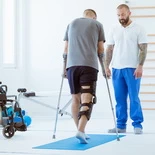
Sports Injuries
Pain Management
Pain management refers to the process of treating, relieving, and preventing pain caused by various conditions—ranging from Office Syndrome, common among office workers and those who use computers for extended periods, to chronic illnesses such as osteoarthritis and herniated disc-related nerve compression.
The primary goal of pain management is to help individuals return to their normal daily routines and improve their quality of life—without having to rely on long-term pain relievers, which may lead to undesirable side effects.
Read More...
For instance, if you suffer from persistent neck, shoulder, and upper back pain or Office Syndrome that radiates into headaches, and it interferes with your ability to focus, it can reduce your productivity and impact your mental well-being—causing stress, anxiety, or even depression. This is why early and proper care is crucial to prevent further complications. And that’s exactly why pain management is so important.
Understanding how to properly manage pain empowers you to take control of your health, choose the most appropriate treatment options, and reclaim a pain-free, happier life.
Pain Relief Through Physical Therapy
Pain management strategies vary depending on the root cause in each individual. One of the most effective and widely used approaches is physical therapy. It helps restore muscle function, reduce pain, and improve quality of life—all without overreliance on medication.
Physical therapists are trained to perform detailed assessments and create personalized treatment plans that may include:
-
Reducing inflammation in muscles and tendons
-
Targeted stretching exercises
-
Manual therapy, techniques tailored to your condition
-
Functional strengthening exercises
-
Ergonomic and postural adjustments for daily activities
-
Education on proper self-care to prevent recurring pain
Read More...
Physical therapy techniques such as stretching, strengthening, and hands-on manual therapy help restore joint and muscle function, improve range of motion, reduce inflammation and muscle tightness, and sustainably strengthen the body.
Moreover, physical therapists provide guidance on modifying lifestyle habits that often contribute to pain—such as adjusting your workstation to fit your body, or correcting sitting posture while working. These changes not only relieve current symptoms but also prevent future flare-ups.
Holistic Pain Management
Modern approaches to pain management increasingly emphasize a holistic perspective, recognizing that the body, mind, and daily lifestyle are deeply interconnected. Every system in the body influences the others, and effective care must consider this whole-person approach.
At Brain Rehab Physio Clinic, we look beyond just the physical symptoms of pain. We take into account your emotional well-being, work environment, and lifestyle habits—because we believe that truly effective pain management must address the body, mind, and emotions together.
Read More...
This includes not only relieving pain but also empowering you with knowledge and helping you adopt healthier habits, so you can manage your condition better in the long run.
By understanding the root causes of pain—including physical, psychological, and environmental factors—we can tailor treatment to target the underlying source and control aggravating elements. This holistic, sustainable approach helps patients regain control of their lives, return to daily routines, and live more comfortably and confidently.




Office Syndrome
Office Syndrome refers to a group of symptoms caused by prolonged sitting or standing in the same position without proper movement or posture change. It can also result from working in an ergonomically poor environment or from overuse of muscles, tendons, and joints. This condition is commonly found among white-collar workers and often leads to musculoskeletal disorders, which can negatively affect overall quality of life, both physically and mentally—causing symptoms such as stress, irritability, and fatigue. Over time, it may also reduce work productivity and efficiency.
Common Symptoms
Many common symptoms of Office Syndrome can be effectively managed and treated through pain management, including:
-
Neck, shoulder, and upper back pain
-
Shoulder blade pain and frozen shoulder
-
Migraine headaches
-
Lower back pain
-
Hip and leg pain
-
Trigger finger, Carpal Tunnel Syndrome, De Quervain’s tenosynovitis, etc.
Severity Levels
Office Syndrome symptoms can be classified into three stages:
- Mild Stage General muscle aches and discomfort without significant impact on daily life. Symptoms often subside with proper rest and activity adjustment.
- Moderate Stage Pain becomes more frequent and lasts longer. It begins to interfere with daily activities, mood, and work performance—commonly presenting as neck, shoulder, or lower back pain.
- Severe Stage Chronic pain that significantly affects quality of life. Individuals may struggle with normal daily activities and may also experience numbness or weakness. Conditions such as herniated discs pressing on nerves may be involved.
Risk Factors
Read More...
-
Prolonged Static Postures: Sitting or standing in the same position for extended periods without changing posture.
-
Improper Work Environment: An ill-suited workspace, such as a desk and chair height that doesn’t match your body’s ergonomics. This can lead to poor working postures like hunching your back, rounded shoulders, or a forward head posture.
-
Lack of Stretching and Regular Exercise: Failing to stretch your muscles and exercise regularly can result in weak, inflexible, and less resilient muscles.
-
Stress and Insufficient Rest: High stress levels and inadequate sleep can also contribute to the development of symptoms.
Self-Care Tips
Read More...
-
Frequent Posture Changes: Adjust your posture every hour to allow your muscles to relax.
-
Ergonomic Workspace: Arrange your work environment according to ergonomic principles, ensuring it fits your body’s needs.
-
Regular Stretching and Exercise: Incorporate regular muscle stretching and exercise into your routine.
-
Relaxation Activities: Engage in activities that help you relax, such as traveling, watching movies, or listening to music.
-
Stress Management and Adequate Rest: Control stress levels and ensure you get enough restful sleep.
Treatment Options
-
Physical Therapy: Relieves pain, strengthens muscles, and offers guidance on posture and ergonomics for long-term relief
-
Medication or Injections: Includes pain relievers, anti-inflammatory drugs, nerve pain medications, and corticosteroids
-
Alternative Medicine: Such as traditional Thai medicine, acupuncture, or cupping therapy
Consequences of Not Seeking Treatment
-
Chronic and Worsening Pain
Pain in the neck, shoulders, or upper back may intensify and spread—potentially leading to headaches. Lower back pain can become persistent, affecting daily comfort. In some cases, the condition may progress into more serious issues such as herniated discs, which can compress nerves and result in numbness in the hands or feet, or muscle weakness. -
Mental Health Decline
Ongoing pain can lead to emotional distress, including irritability, stress, anxiety, or even depression. -
Reduced Quality of Life
Daily tasks become more difficult. Simple activities may no longer be performed with ease, impacting one’s independence and lifestyle. -
Decreased Work Performance
Persistent pain interferes with focus and productivity, making it harder to complete tasks effectively at work.
If your pain persists for more than 1–2 weeks, does not improve with medication, or is accompanied by numbness or symptoms that interfere with daily activities or sleep, you should consult a doctor or physical therapist for proper evaluation and care.
When it comes to Office Syndrome, holistic pain management plays a crucial role. It not only helps alleviate pain and treat the underlying causes, but also supports long-term recovery and prevents recurrence.
Ignoring persistent pain can affect both physical and mental health, leading to stress, reduced work performance, and even strained relationships with others.
If you’re experiencing ongoing pain, don’t wait. Consult our team at Brain Rehab Physio Clinic today. Let us help you restore your well-being.
“Don’t let pain take control of your life.”
Contents

Office Syndrome & Pain Management
ออฟฟิศซินโดรมและการยศาสตร์ (Office Syndrome & Ergonomics)
ปวดกล้ามเนื้อเรื้อรัง (Myofascial Pain Syndrome)
กล้ามเนื้อสะโพกหนีบเส้นประสาท (Piriformis Syndrome)
ปวดหลังส่วนล่าง (Low Back Pain)
เอ็นข้อศอกด้านนอกอักเสบ (Tennis Elbow)
ภาวะการกดทับเส้นประสาทข้อมือ (Carpal Tunnel Syndrome)
Thoracic Outlet Syndrome (TOS)
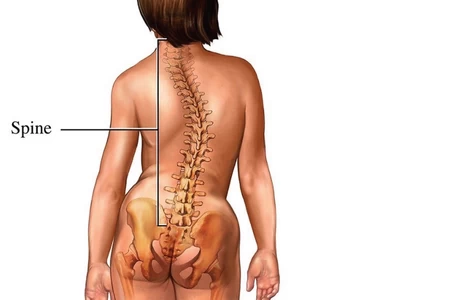


Assessment

Ultrasound

Shockwave

Electrical Stimulation
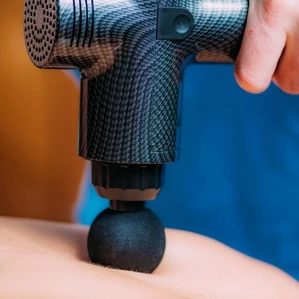
Gun Massage
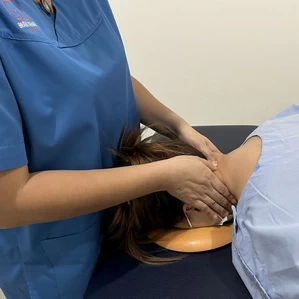
Joint Mobilization
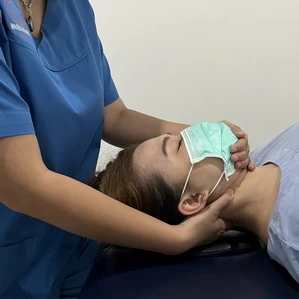
Manual Traction

Stretching

Hot/Cold Compress

Exercises

Home Program

Posture Correction
FAQs
What is Physical Therapy?
Physical therapy is a modern medical practice focused on treatment, promotion, prevention, and holistic rehabilitation to improve the quality of life for patients. It helps alleviate pain, enhance movement efficiency, and restore physical function from injuries or diseases, without the need for medication and avoiding surgery. The treatment process is divided into three main steps:
Manual Techniques: These include hands-on techniques that are continuously trained and practiced, such as joint mobilization to increase flexibility, manipulation to align joints, and stretching to release muscle tension.
Modalities: The use of therapeutic equipment to reduce pain and strengthen muscles, such as shockwave therapy, ultrasound, and electrical stimulation.
Exercises: Once pain is reduced, exercise is incorporated to improve flexibility and muscle strength, as well as prevent re-injury. In the case of stroke patients, exercise focuses on specific areas to restore body function, such as training core muscles and lower body muscles for those with walking difficulties.
Physical therapy enables you to move confidently, reduce pain, and enhance your overall quality of life.
Why Brain Rehab Clinic?
Patients can contact us 24/7 via WhatsApp, Line or Phone regarding their issues. Besides, we provide continuous follow up on symptoms, treatment progress, as well as giving advices on basic self-care until the next appointment.
Additionally, both our Asoke and Nonthaburi branches offer free parking and are conveniently located near sky train (BTS) or subway (MRT) stations.
What is the difference?
Our physiotherapists have more than 10 years of work experience. We assure that patients will receive the best and safest treatment.
Do you have 8-step treatment?
No, we choose the right treatment methods for each patient’s condition, such as electrical stimulation is not suitable for every case, so we take time to focus on the right treatment that works best.
So what is the treatment method?
1. Comprehensive Physical Examination With the experience of our physiotherapists, each with over 10 years of experience, you can be confident that you will receive an accurate assessment to identify the root cause of your symptoms. This initial step is crucial for effective and targeted physiotherapy.
Pain in the same area may have different causes in different individuals. Our team’s expertise allows for a tailored treatment plan based on your specific condition, promoting faster and long-lasting recovery.
If the patient’s symptoms are severe, suspicious, or caused by an accident, we will recommend consulting a doctor for additional tests, such as X-rays, CT scans, or MRIs, to obtain more detailed insights. On the other hand, if diagnostic imaging results are already available, they can be used to enhance the effectiveness of physiotherapy. In some cases, our physiotherapists will collaborate with doctors to plan treatment approach and work closely with fitness trainers to design personalized exercise programs, so the patient can regain movement with confidence and live a higher quality of life.
2. Manual Therapy Our clinic’s physiotherapists are experts in Manual Therapy (hands-on therapy), which is a key technique for relieving inflammation in Trigger Points, often a primary cause of chronic pain. Treatment includes several techniques such as muscle stretching to improve flexibility and reduce tightness, joint and soft tissue mobilization to increase the range of motion, and manual traction (neck and back) to reduce pressure on nerves. These techniques are considered the main approach to physiotherapy in the United States and are widely recognized worldwide for their effectiveness.
3. Modalities Our clinic also incorporate advanced physical therapy equipments such as Shockwave Therapy, Ultrasound, and Electrical Stimulation as part of the treatment process to assist with muscle relaxation, reduce inflammation, and strengthen muscles.
Physiotherapists will select the appropriate modalities based on your condition. For example, patients with degenerative bone conditions should avoid using Shockwave Therapy in the affected area for safety reasons.
4. Therapeutic Exercises are another primary treatment approach in physiotherapy in the United States. These exercises help strengthen muscles to maintain balance on both sides, increase flexibility, enhance the range of motion, and prevent the recurrence of injuries.
Additionally, we focus on improving posture during daily activities (Posture Correction) including sitting, standing, lying down, and walking, following ergonomic principles to minimize the risk of future injuries.
5. Education and Ongoing Monitoring We focus on helping patients understand their condition or health issue so they can take appropriate actions and avoid risk factors. Moreover, we continuously monitor treatment progress, provide guidance, and ensure that patients regain confidence in returning to normal daily life.
For those looking for a “physiotherapy clinic near me”, it is important to ask about the treatment approach to ensure it suits your condition and characteristics. It is also essential to choose a clinic with experienced physiotherapists who are highly skilled at accurately diagnosing the problem to deliver the best possible treatment for quick, safe, and long-term recovery without relapse. You can consult with us regarding your symptoms via Phone, WhatsApp or LINE OA.
The pain will eventually go away because the body can heal itself. Right?
The human body has the ability to heal itself, but we need to move or use it constantly, the self-healing process becomes much more difficult.
If pain does not improve within 2-3 days, we do recommend you to attend physiotherapy sessions, helping you speed up recover, reduce pain from the injuries, and prevent the condition from becoming chronic.
How many visits and frequency should I attend physiotherapy sessions?
Depending on the symptoms, for example, a ligament sprain typically takes longer to heal than a muscle strain. For a herniated nucleus pulposus (HNP), physiotherapy primarily provides supportive care and pain relief, depending on the stage of the condition.
Patients should attend physiotherapy sessions at least 1-2 times a week to ensure consistent treatment and a faster recovery.
Although each person’s pain tolerance level may vary, seeking treatment as soon as symptoms appear can speed up recovery and prevent the condition from becoming chronic.
My condition is getting better. Can I stop physiotherapy treatment?
Physical therapy treatment requires a continuation of treatment to ensure full recovery and prevent the recurrence of symptoms. The electrical waves used in the treatment are only effective for a certain period of time. If the patient stops treatment prematurely, it is like taking medicine incompletely, which increases the chance of the condition returning or becoming chronic.
According to clinic statistics, patients who fully complete their treatment do not experience a recurrence at the same spot within 6 months. However, this also depends on the patient’s behavioral adjustments.
What is the difference between regular exercises and exercises by physiotherapists?
Physical therapy exercises is different from regular exercise because we focus on strengthening the muscles in the affected areas and design exercises that are suitable for each individual’s body condition and health issues. This helps strengthen weak muscles and prevents re-injury at the same spot.
In addition to the treatment, as if you had a personal trainer, designing individualized exercise routines for each session, tailored to the muscle condition at that time.
What conditions can't be treated by physiotherapy?
Contact us
085-9966-353Business Hours
Saturday - Sunday: 09.30 - 18.30 hrs.
Location
Parking
Business Hours
Saturday - Sunday: 09.30 - 18.30 hrs.
